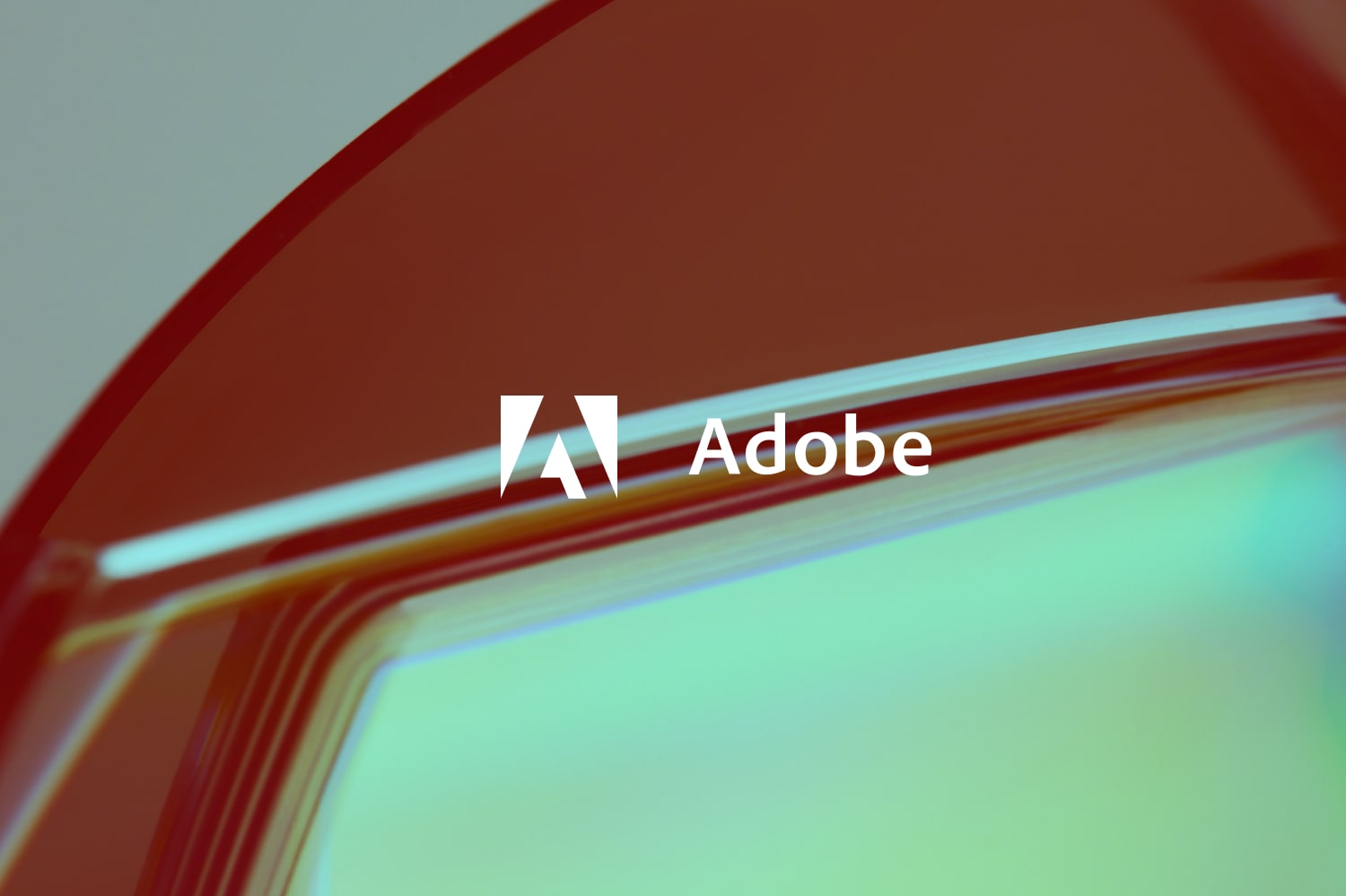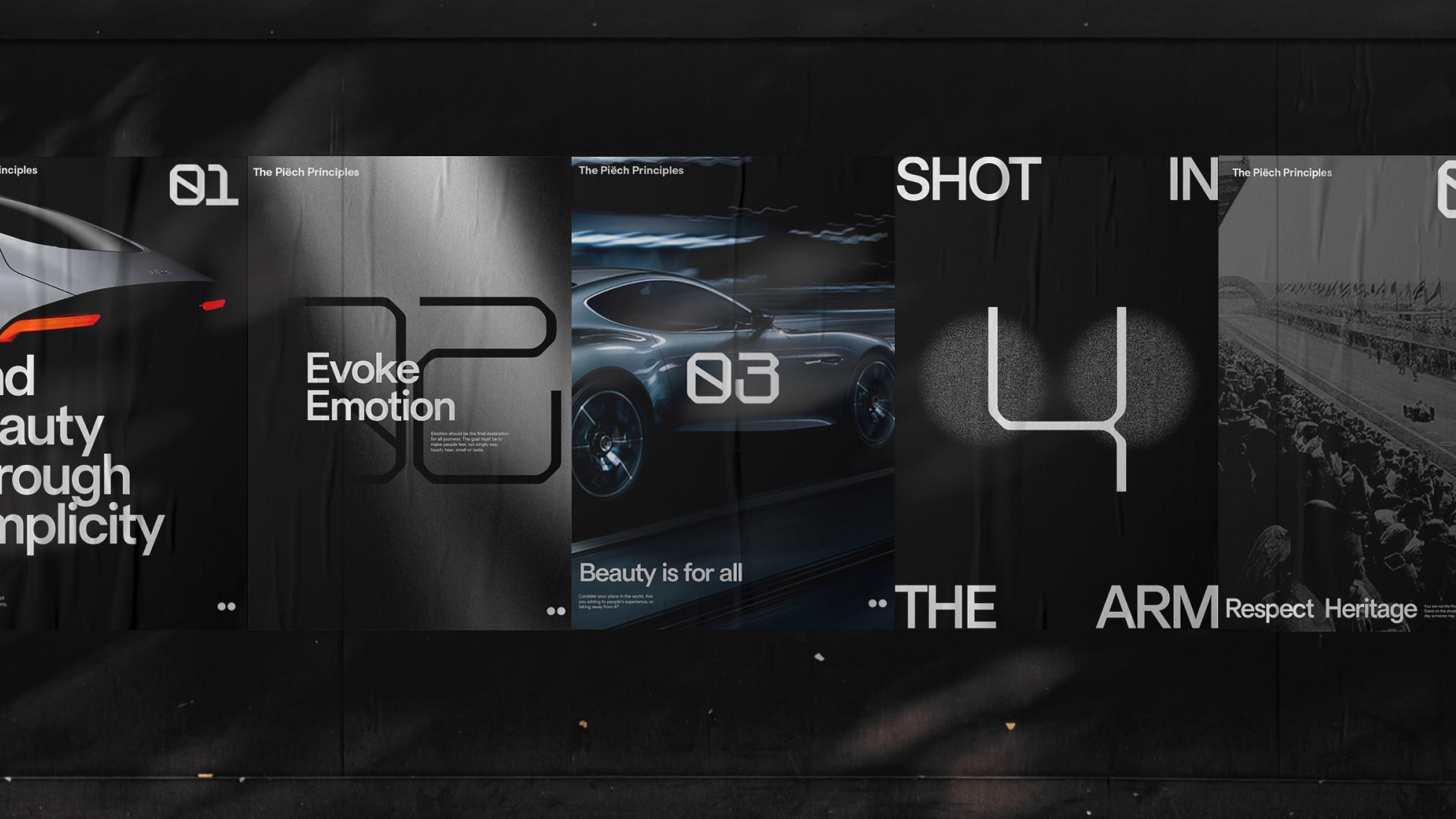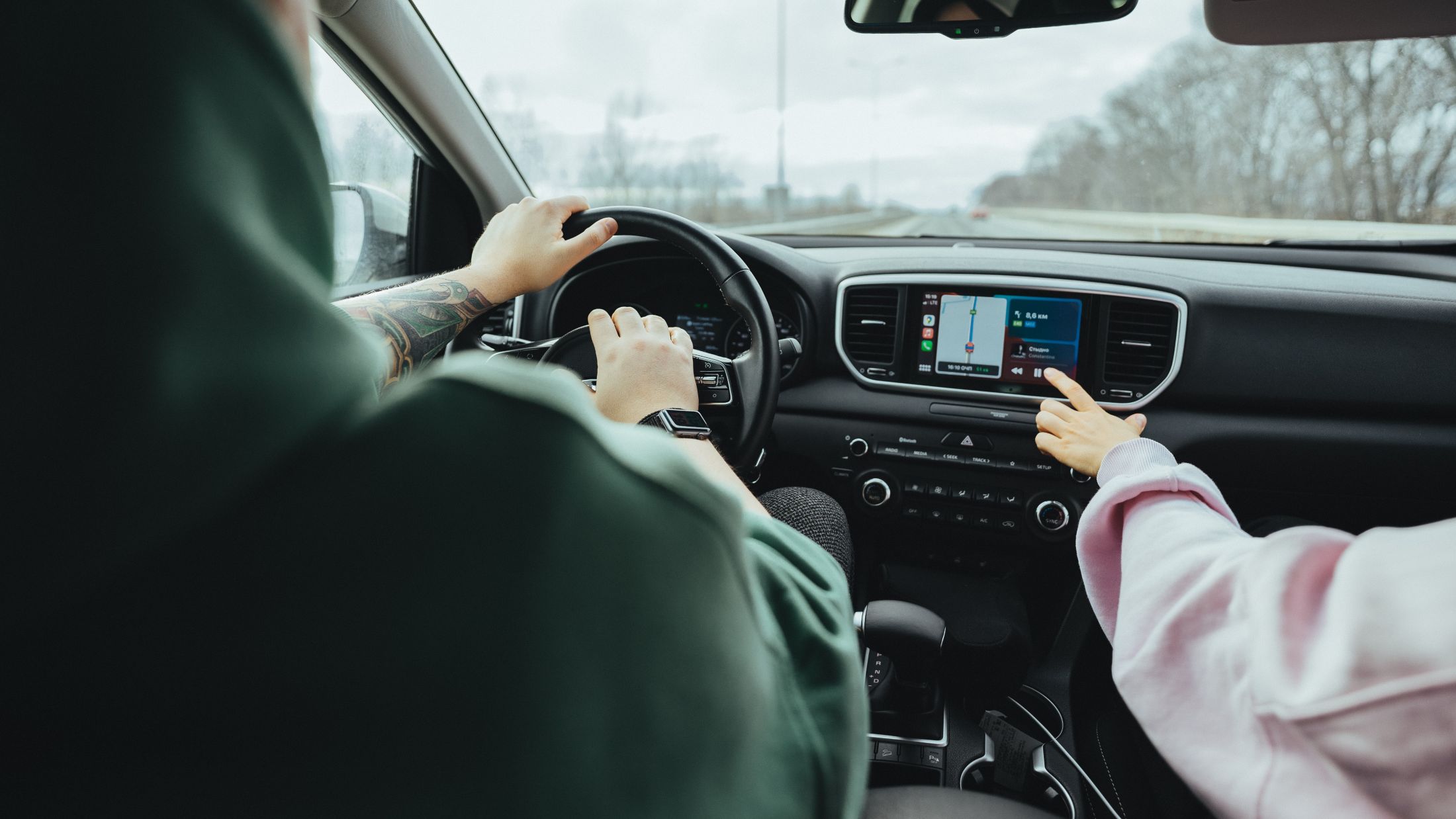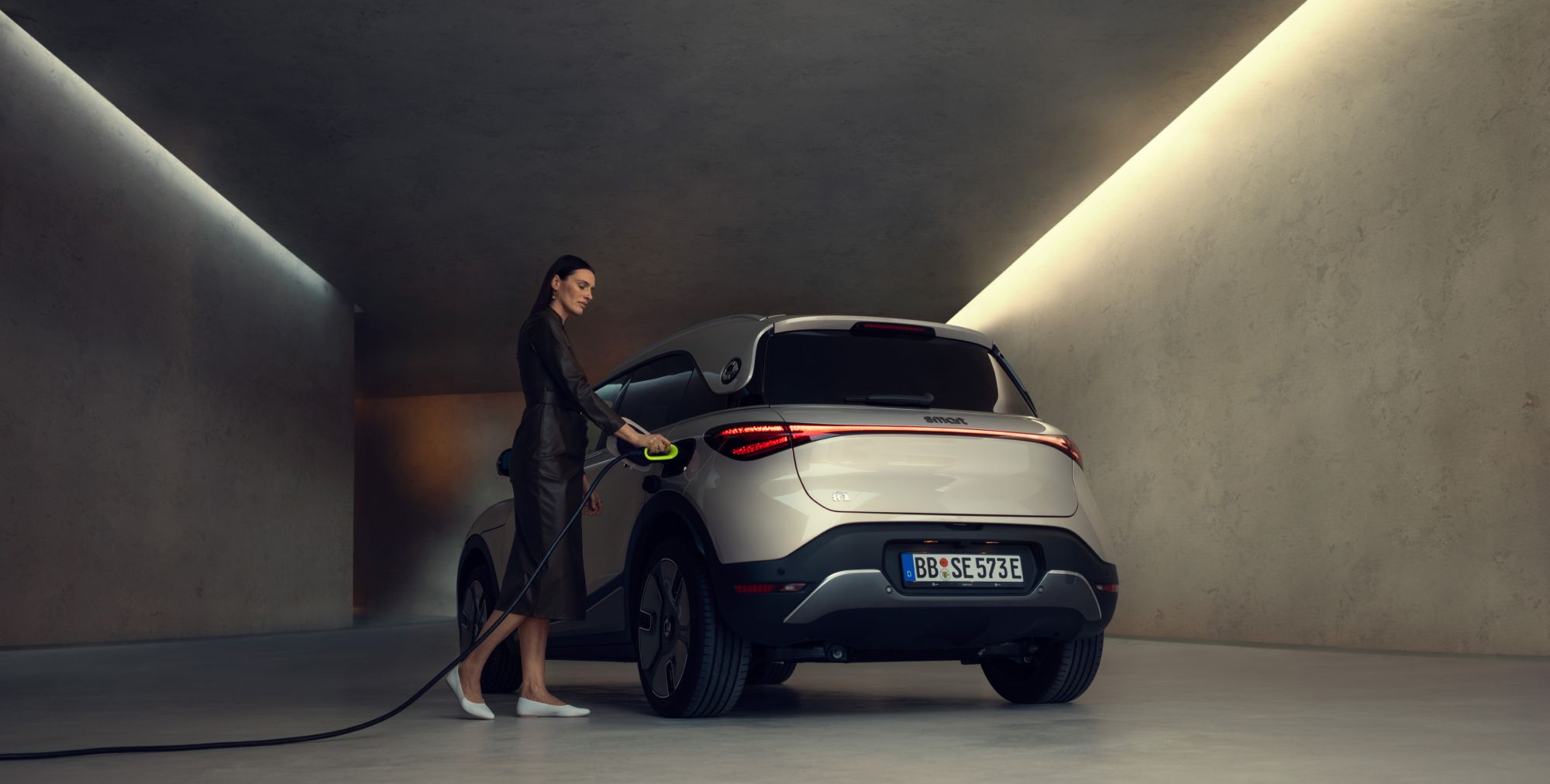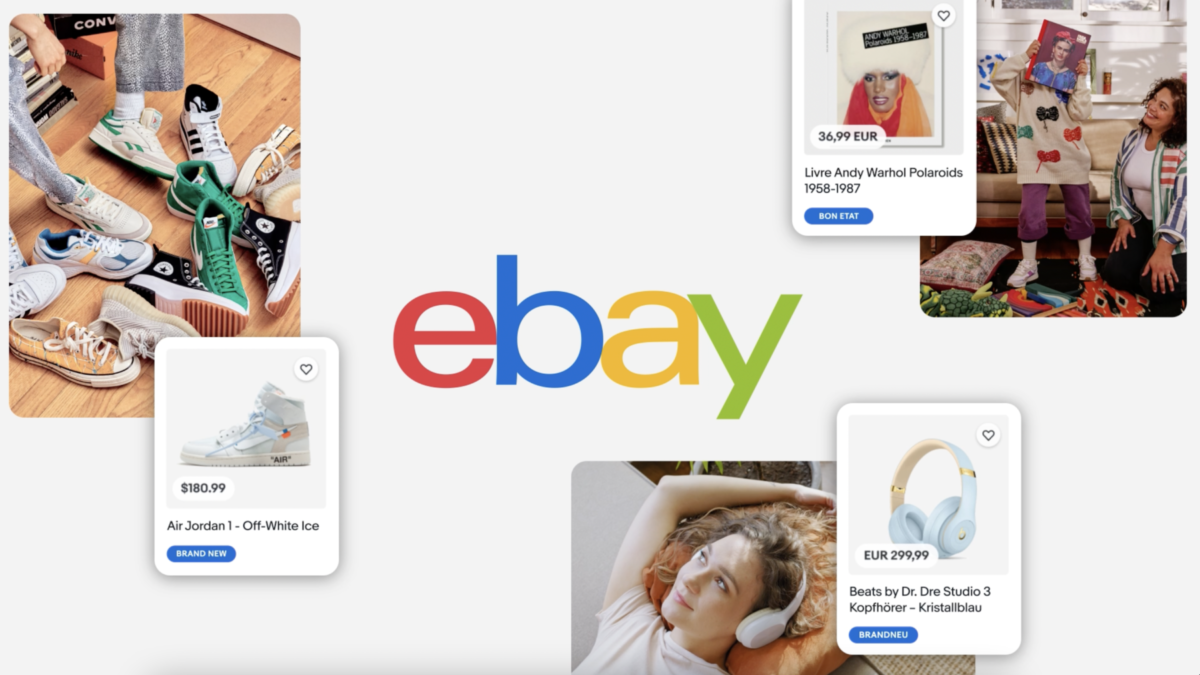In 2023, Audley Travel, a market-leading travel company with a stronghold in the US and UK, found themselves at a crossroads. Well-known for curating tailor-made holidays across 90 countries, the company wanted to provide a more rounded and personalised client experience.

Audley uses Salesforce as their CRM technology of choice, and following a collaborative discovery session between the three organisations, DEPT® (as a Salesforce premium technology partner) proved to be the natural choice to implement Marketing Cloud to revolutionise Audley’s cross-channel marketing efforts. And so we seized the opportunity to mark a transformative chapter in Audley’s email marketing journey.
The objective: re-engaging users
Audley Travel had a straightforward yet ambitious objective: to launch three high-ROI use cases rooted in user website behaviour. Utilising AI-based product recommendations by Salesforce’s Einstein, the intent was to re-engage users who had abandoned an itinerary, a destination, or an enquiry page by sending them a tailored email reminder one day after their initial interaction. These emails were designed either to nudge the user toward completing their booking or to present curated itineraries that aligned with their most-viewed destinations.

Unveiling the power of Marketing Cloud Personalisation
By implementing Marketing Cloud Personalisation, Audley Travel laid the foundation of its first-party data strategy, effectively creating a walled garden of proprietary customer data. This approach not only allows for a nuanced understanding of customer behaviours but also empowers the brand to build powerful user segments for targeted campaigns.
Leveraging AI-driven recommendation systems, each email is dynamically personalised according to user affinities such as destination and itinerary interests, as well as incomplete forms. This personalisation strategy is underpinned by the collection and analysis of user behavioural data across various digital touchpoints, providing valuable insights into the customer journey. Specifically, these touchpoints encompass both our website and email interactions. On the website, we track a user’s behaviour down to the minutiae – what pages they visit, the itineraries they explore, categories and destinations they express an interest in, and even the duration of time they spend on each itinerary. Similarly, within our email campaigns, we closely monitor metrics like email open rates and timestamps to understand the optimal timing and content that resonates with each user.
In doing so, Audley Travel succeeds in breaking down existing data silos, gaining a robust understanding of their customers’ online behaviour and needs, thus setting the stage for a seamless cross-channel experience.

In summary: personalisation meets performance
In just a few months, Audley Travel and DEPT® rolled out a fast, ROI-driven personalisation strategy through Marketing Cloud. This quick implementation met key revenue targets and gave Audley the flexibility to adapt to customer needs and market changes. The project serves as a key milestone, offering Audley an adaptable framework that aligns well with their long-term business objectives that focuses on and improves the overall customer experience.
Explore DEPT®/TRAVEL, our team of specialists pioneering solutions to help travel brands to grow sales, and utilise data & AI to create best-in-class experiences.
Questions?
Marketing Automation Consultant
Alexander Van Rompuy
Discover more
There is a tendency in the B2B e-commerce sector to look across to the top B2C brands and play down the applicability of the features and techniques that make their sites market leaders. The idea that stylish sites and flashy features only fit the B2C model, while B2B should focus on the bread and butter options to fit the typically measured and professional tone of voice that many B2B brands use. This is misplaced thinking, based on the division of B2B and B2C. In reality, there are businesses, there are customers, and there is e-commerce. Shopper psychology spans across each; the features that allow B2C brands to excel in the online space are there because they work. Chiefly, personalisation.
Personalisation has always played a role in commerce. In the past, personalisation existed in retail as an in-store assistant, and in industry as a sales rep that would build a relationship with the customer over time, learning their needs, their pain points and how they liked to conduct their business. These approaches have always led to a much improved buying experience; faster, easier and more accurate. But these relationships take time to build; it’s a long term process of listening, learning and responding. And while human-to-human contact is still very much valued, digital technology, data tracking and analysis can bear the load. When implemented well, personalisation can speed up sales cycles and nurture prospects into loyal customers.
Advancements in digital technology have radically cut the time it takes to understand each individual customer and provide a personalised commerce experience. This technology is widely available, often built in to your content management system; all businesses now have the ability to implement personalisation strategies into their marketing and commerce efforts. This is good news, seeing as smart personalisation engines used to recognise customer intent can lead to an average profit increase of 15%. The flipside to this, is that personalisation has moved from an added benefit of certain businesses to an expected feature across every experience. 33% of consumers abandoned a business relationship last year because of a lack of personalisation. This is a necessity, not a nice to have feature.
Utilising account specific data
When starting to think about how your business can use personalisation in its commerce sales funnel, begin by thinking about how the company can collect data about customers and visitors. It’s important to begin with data capture, as the implementation of features depends on the type of data collected.
For specific customers, data primarily comes through the account creation process: job function; past purchases; which pages they have previously visited on the site; their dwell time; on-site search history, and so on. If the current data collection on account creation is limited, build this out for future customers and consider requesting current users to update their profile with more information upon their next login. Rather than hiding the motive, make it clear that the company will be using the data for an improved, personalised shopping experience. This clarity will boost the numbers opting in to data sharing, as it clearly offers a mutually beneficial exchange.
Putting this in place, electronics manufacturer Omron was able to create a site that adapts to the needs of each visitor. By using information on the job function of each logged in visitor, the Omron site could dynamically adapt and funnel distributors, systems integrators, Omron employees and end users to the appropriate pages. This is a simple solution, using just one piece of data to adapt the site, but it has a major impact, with the ability to scale up personalisation based on further gathered information.
Making use of automatically collected data
Thinking about data capture also means thinking about the information that is automatically collected when a user visits the site, whether logged in or not. Their location data, the search term that brought them to the site, their onsite user journey – all of this information can inform your personalisation approach. Personalisation based on this information is subtle, possibly unnoticed as the visitor explores the website. They may not recognise the personalised experience, but will come away thinking that the shopping experience was quick and easy.
This also applies to classic customer segmentations, a general grouping based around shared behaviours. Personalisation doesn’t always mean single individuals. These segmentations can be useful when thinking about broader data automatically collected by new visitors to the site, as the depth of information isn’t there to create an individual response. As an example, an electronic parts company could use site search data to establish a segmentation that prominently displays associated purchases to visitors.
With an understanding of how data is collected, your business can begin planning the execution. At this stage, think in terms of what can be done onsite and off-site. While it is easier to control the onsite content and design, focusing solely on the website can see businesses missing out on the opportunity to fine tune their contact with customers through advertising and direct messaging.
Dynamic content
Onsite, dynamic content is a useful tool to make use of. This is content that adapts based on the data that is fed into the CMS, whether it is account data, previous purchases, search terms, and so on. The most obvious use is often found in the leisure and tourism space; if a visitor clicks on a number of pages relating to Italian destinations, the site can adapt the background images on more general pages to show Rome, Venice and Florence.
In the B2B space, dynamic content can be used to display relevant information, based on what is known of the customer. If they have listed their job function as logistics, they can be shown contextual information on delivery times and options, while a member of the finance team will see more about pricing options and different payment plans.
Accelerating everyday tasks
Speeding up common processes is another use, particularly helpful when looking to keep long term customers engaged. There will be a number of actions that returning customers have to redo with each visit, the most obvious example being adding items to the basket.
This is particularly important for B2B commerce as orders can be large and complex, and customers are more likely to repeat their orders when compared to B2C. Improving reordering was a key feature when developing Brenntag’s new commerce platform, Brenntag Connect.
As a chemical distributor, Brenntag has a strict process when allowing new customers to use their service. Customers are typically placing large, identical orders, leading Brenntag to create an automation service that places repeat orders and provides relevant contextual information when customers need to make an adjustment. This is a clear indicator of why it’s important to remember that personalisation is not fitting to how customers buy, it’s fitting to how customers behave.
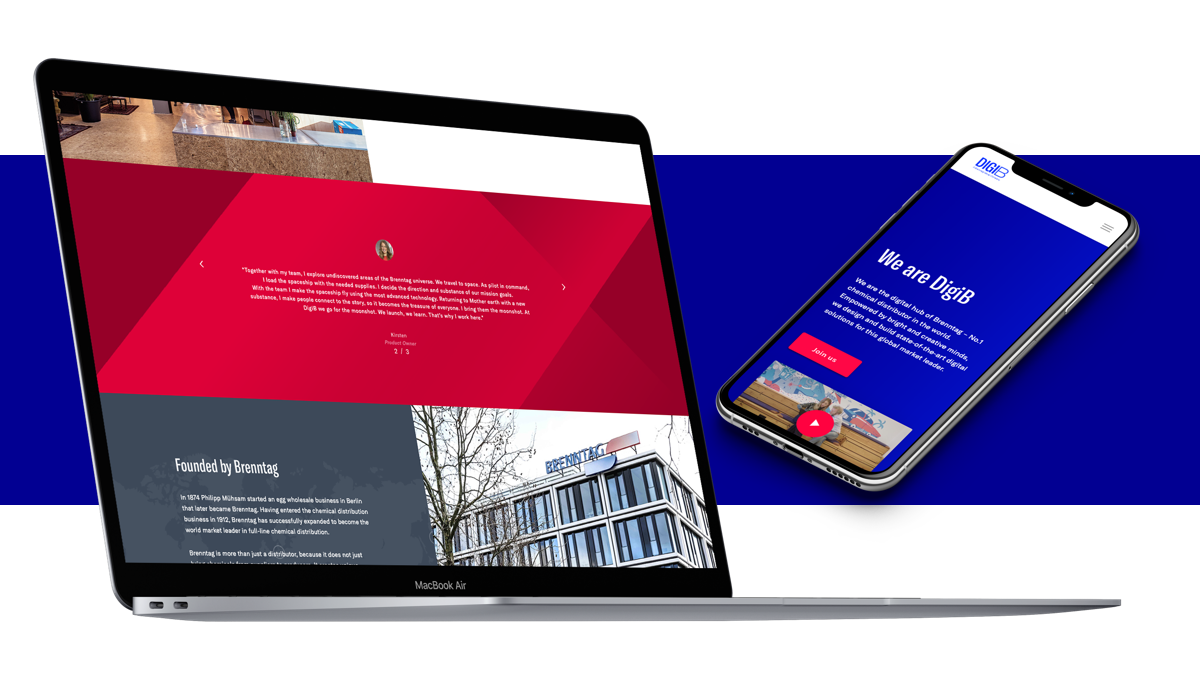
Supplying more information to upsell
When customers are returning to reorder from your company, there is an opportunity to upsell existing products and promote new ones. This goes beyond ‘customers who bought X also bought Y’. This form of personalisation should aim to suggest alterations and explain the reasoning, based on the specific customer’s order. Think of it as a digital representation of the sales rep relationship, understanding the developments in a customer’s business and reacting with new solutions.
It can also be developed into a website feature, an interactive problem solving flowchart or chatbot that allows visitors to input their problem or need and see what solutions the company would suggest.
Optimising site speed
Not every on-site personalisation improvement is interactive and clear for customers to see. Adding in predictive loading is one example, a feature that speeds up the load time for each page on your site based on similar customer journeys.
Customers may never realise that the site they visit uses predictive loading, but they will notice if a site is slow to load. Selling needs to be as smooth as possible; slow loading leads to a larger bounce rate. Installing features, like predictive loading, that uses the information gathered when analysing personalisation can ensure the process never stalls.
Off-site actions
Personalisation also applies to actions that the company makes off-site. Email is one area, automated workflows for customers that left the site without checking can bring them back, boosting conversion through reminders and specialised offers. This can similarly be used for surrounding purchases, following the frequency of repeat purchasing or the typical time it takes for a customer to branch out to a new product.
Also consider how the purchasing journey exists across different touchpoints such as apps, social media and face-to-face meetings. Is it easy to bring up the customer profile and optimise their order based on this information? This kind of integration creates a seamless experience, perfect for B2B’s longer, omnichannel purchasing journeys.
Facilitate an easier commerce experience
In each recommendation, the end goal of facilitating a faster, easier, more accurate commerce experience remains the number one priority. By hitting each aim, the business makes each customer more likely to checkout, more likely to return, and more likely to talk to people in their industry about how great purchasing from your business is. These improvements build up, a snowball effect that ultimately results in increased sales and larger, loyal customer base.
More Insights?
View all InsightsQuestions?
Managing Director UK
Brian Robinson

From gasoline to gigabytes: Automotive’s electric, digital, and connected future
Explore the current state of the automotive industry and predictions from the team at DEPT®/AUTOMOTIVE in our latest longread. In this comprehensive report, we explore where the auto industry stands after the COVID-19 pandemic and its effects on manufacturing and supply chains, and we’ll dive into the trends and innovations shaping the future of driving.
Download your copy for automotive industry trends and insights covering:
– The rapid growth of the eclectic vehicle market, government interventions, and the challenges and opportunities for auto brands in this space.
– The need for charging stations, the rise of out-of-home charging, and how businesses are shaping charging culture.
– How data is transforming the automotive industry, from marketing strategies to product development, and the importance of leveraging customer insights.
– The world of connected cars, the impact of connectivity on safety and entertainment features, and the challenges of meeting customer expectations.
Fill out the form to gain valuable insights into the future of the automotive industry and stay ahead of the curve in this rapidly evolving landscape. Your copy will be in your inbox shortly.
Visit DEPT®/AUTOMOTIVE and learn how we’re helping leading brands pioneer the future of driving and mobility.
Insights & work
Questions?
Managing Director UK
Brian Robinson
When international automaker smart broke into the electric vehicle market, it needed to bring its legacy customers along for the ride.
But it wasn’t enough to simply promote the release of its new “smart #1” model—the brand needed to fully revamp its customer journeys to convert its existing audience into EV buyers.
Using Adobe Journey Optimiser, DEPT® and smart built a new customer relationship management and marketing automation program to support the automaker’s updated strategy. In less than nine months, we implemented a new campaign strategy that included 11 customer journeys for new and returning users. And it worked. Our first campaign resulted in 11% of smart’s database converting into pre-order customers, a 300% higher conversion than the automotive industry benchmark.
Since then, the project has expanded to more than 500 emails sent annually, and email has become one of the key drivers of direct and indirect revenue for smart. By leveraging the Journey Builder, Audience, and Profiles sections, smart provides an unprecedented level of personalisation within its customer experience.
Turn prospects into customers with better customer journeys
Amidst today’s digitally driven landscape, it’s crucial that businesses create seamless, personalised customer journeys. And as exemplified by smart’s successful launch into EVs, Adobe Journey Optimiser is a powerful solution for brands looking to enhance their customer experiences.
But at the same time, a tool is just a tool. The strategy and people behind the tool drive the results.
With deep expertise in Adobe products, marketing automation, and content creation, our team has some helpful ideas for creating better customer journeys and experiences via Adobe Journey Optimiser. To orchestrate holistic, effective journeys, we recommend the following.
Define goals and customer journey stages
First things first. Before diving into the software, clearly define your customer journey goals and estimate the time to achieve them.
Identify the touchpoints along the customer journey and prioritise them based on their impact. Think of greater business goals like revenue, margin, or market share but also smaller goals like conversions and CTR.
Gather and analyse customer data
Collect all available data about your customers from various sources and spend the time to analyse it properly. This will help you understand your customer personas, define goals, and identify the touchpoints where personalised experiences can be created.
We most often see two main challenges around data.
- With customer data, it’s often scattered and requires integration before you can get utility from it. Depending on external factors, this might be a huge undertaking, so it’s worth strategising with your data team.
- Combine customer interests with customer journeys. Not just demographics but preferences, preferred channels, and purchase history. When paired with where a customer is in the buying journey, it can add that personalised element that drives conversion.
Consider integration with other systems
Determine if you need to integrate Adobe Journey Optimiser with other systems (like your advertising platform) to enhance data collection and streamline processes. This can provide a more comprehensive view of your customers and enable seamless platform communication.
For example, at DEPT®, we enrich customer profiles with specific ads the customer clicked on. This helps us understand what their initial interests are.
For those without advanced analytics platforms like Adobe Journey Analytics, AJO’s reporting and SQL capabilities offer valuable tools for monitoring profile/channel engagement and troubleshooting.
Collaborate with cross-functional teams
Assemble a team of specialists who can create end-to-end experiences aligned with your goals and touchpoints. Collaboration between experts from sales, service, and marketing is crucial to ensure a holistic approach to customer engagement.
Our biggest tip here is to make sure your whole team works towards the same goal! From our experience, this simple act is often overlooked, but it can make a difference in large teams. Balance mandates for individuals with collaboration days so individuals can dial in their expertise while keeping a single north star. Celebrate success.
Altogether, Adobe Journey Optimiser can help your marketing team deliver highly relevant, personalised experiences.
However, despite its integration capabilities and user-friendly interface, it’s important to remember that Adobe Journey Optimiser is still a tool—and you need expert collaboration, a deep understanding of your audience, and a data-driven strategy to deliver truly effective end-to-end customer journeys.
As a long-time Adobe partner, DEPT® has more than 500 team members who specialise in helping brands harness the full potential of their Adobe products. So, let’s discuss how you can most effectively use Adobe Journey Optimiser to create and manage personalised web experiences.
Insights & work
Questions about customer journeys?
Head of Marketing Automation
Annemiek van den Heuvel
From investing heavily in developing electric vehicles, to shifting towards direct-to-consumer models and exploring digital-first experiences both inside and outside the car, to evolving consumer preferences, automakers need to become more tech-savvy and data driven to adapt and thrive in an evolving landscape.
DEPT®/Automotive is an expert team dedicated to building the future of automotive – collaborating with some of the world’s most respected brands, innovative startups and forward thinking organisations.
Driving mobility
The global automotive industry is at a critical juncture due to shifting consumer needs. Delivering a frictionless buying experience has become too complex. Standing out and building trust amongst consumers is highly competitive and difficult. And it’s a struggle to balance offering user-friendly interfaces, advanced in-car features and EV offerings, all at the same time.
Based on our 20+ years of experience in the automotive industry and working for some of the leading brands like Audi, smart, Triumph Motorcylces, and Piëch, we are well-positioned to lead the way in technology and marketing to help automotive brands stay ahead.
DEPT®/AUTOMOTIVE is the answer to the challenges tech and marketing leaders face:
Revolutionising the car buying experience
We build brands, and craft stories and experiences that customers want in a digital-first world. Our unique creative, AR and 3D skills create experiences such as online showrooms that allow users to configure their dream car and conveniently buy it online via user-friendly and intuitive online platforms.
Connecting the dots for personalised marketing
With precision targeting and AI, we deliver the perfect message at the right moment and location to attract potential car buyers and push subscription and pre-purchase models across the customer journey. We keep customers engaged and nurture them towards the sale by leveraging first-party data.
Preparing for the future of driving
From advanced infotainment systems to smart assistants, we transform the way clients and their customers interact with vehicles. Our user-friendly solutions ensure seamless charging experiences, paving the way for a sustainable future.
Deep industry experience






















We’ve had the pleasure of working with some of the world’s most innovative automotive brands
Revolutionizing the car buying experience
We help automotive brands to deliver pioneering, frictionless buying experiences.
ALL SERVICES
Brand and creative
We craft the stories that your audience wants to hear. Whether it’s around speed, range, or luxury, we leverage brand strategy, creative thinking, and motion design to infuse creativity that is profoundly human and culturally significant.
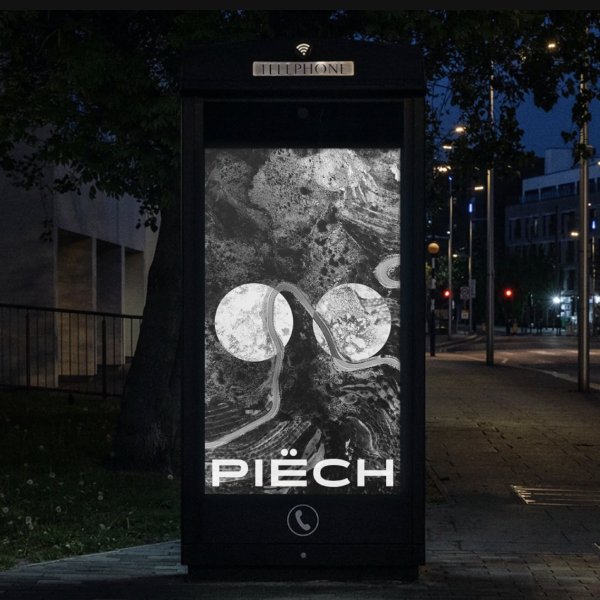
360 campaigns
We excel in developing tailored, end-to-end creative marketing campaigns that resonate with your target audience. We craft cohesive strategies spanning the customer journey and deploy creative automation for global reach, whether for customer acquisition or lifecycle marketing.

AR and 3d
Our distinctive blend of creativity, AR, and 3D expertise enables us to craft online showrooms that allow users to configure their dream car and conveniently buy it via user-friendly and intuitive online platforms, turning the car exploration and customisation process into a truly delightful experience.
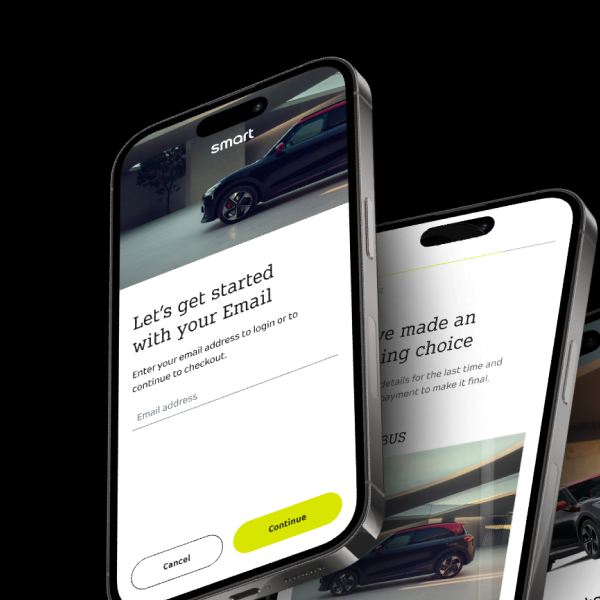
CX and commerce
We provide end-to-end solutions that enhance conversion rates and sustain customer engagement. We can help your platform seamlessly blend inspiration, engagement and sales.
Connecting the dots for personalized marketing
With precision targeting and AI, we deliver the perfect message at the right moment and location to attract potential car buyers and push subscription and pre-purchase models. We keep your customers engaged and nurture them towards the sale by leveraging first-party data.
View All Cases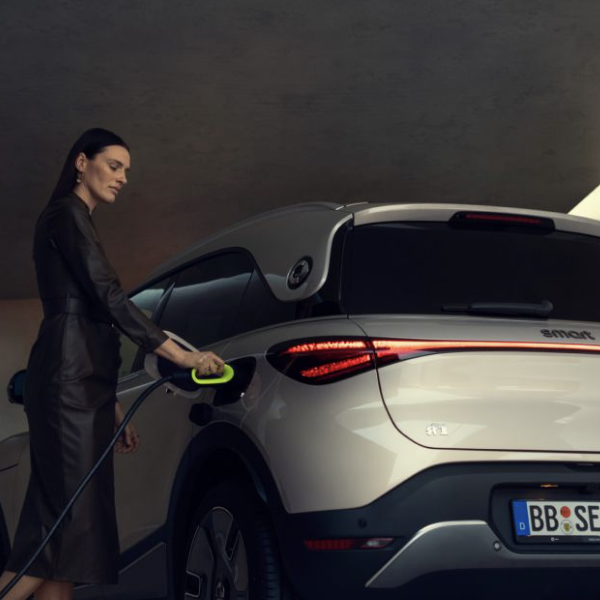
Full Funnel Media
Our media strategies cover the entire spectrum, from raising upper-funnel awareness through various channels to driving performance and conversions via search engines and specialised publishers like Carwow. We optimise budget allocation for maximum efficiency and effectiveness, employing cutting-edge media solutions to accelerate your business outcomes.

Data driven marketing
We employ advanced data and segmentation strategies to deliver highly personalised experiences. Through a deep understanding of your audience and consumer behaviour, we fine-tune your marketing campaigns with precision through methods like incrementally testing and data driven personas, resulting in increased revenues and reduced ad waste.

Marketing automation at scale
We deliver messages that are not only timely but also tailored to specific locations, ensuring that customers remain engaged and are directed towards making a purchase. Our strategy hinges on the use of precision targeting, AI and first-party data to unlock customer journeys, foster loyalty, and seamlessly automate processes.

Analytics and Business Intelligence
Our team of data and intelligence experts will configure, collect and seamlessly integrate your data, and extract actionable insights. Additionally, we harness advanced analytics techniques to make evidence-based predictions that not only meet customer needs but also elevate brand perception.
Preparing for the future of driving
From advanced infotainment systems to smart assistants, we transform the way clients and their customers interact with vehicles. Our user-friendly solutions ensure seamless charging experiences, paving the way for a sustainable future.
View All Cases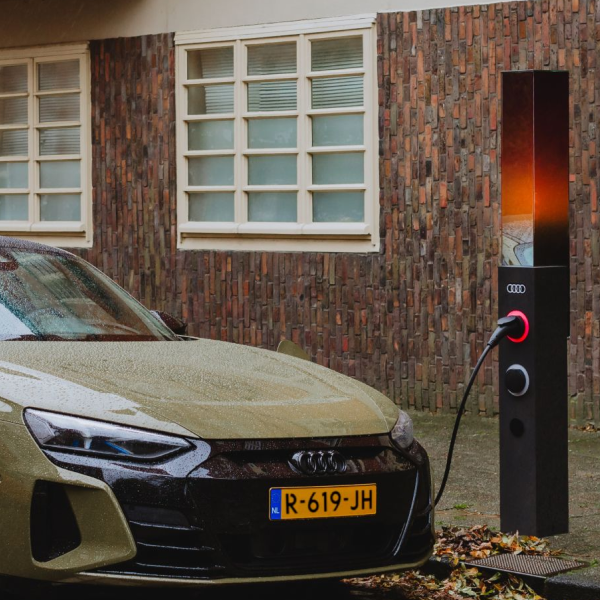
Product Innovation
We revolutionise the interaction between clients and their vehicles with enhanced in-car features and state-of-the-art infrastructure. Our user-friendly solutions guarantee smooth charging experiences, on-screen interactions, and innovative product offerings.

Connected experiences
With the emergence of larger displays on the dashboard and onboarding the power of 3D gaming engine, we unlock a realm of possibilities for customisation and personalisation.

self driving solutions
Our experience in infotainment systems and content/UX/UI can help automotive brands deliver an exceptional experience for passengers. And we can help brands establish the right marketing strategy to ensure consumers are comfortable and excited about taking advantage of this cutting-edge technology.

Augmented information
Leveraging augmented information technology via windshield displays and similar innovations, we aim to streamline your space and deliver precise information at the perfect moment, right within your field of view. Our in-vehicle screen experiences are designed to enhance your driving convenience and safety, making your journey smoother and more secure.
Drop us a line
Drop us a line to discuss how we can work together to achieve your goals.
Insights
VIEW ALL INSIGHTS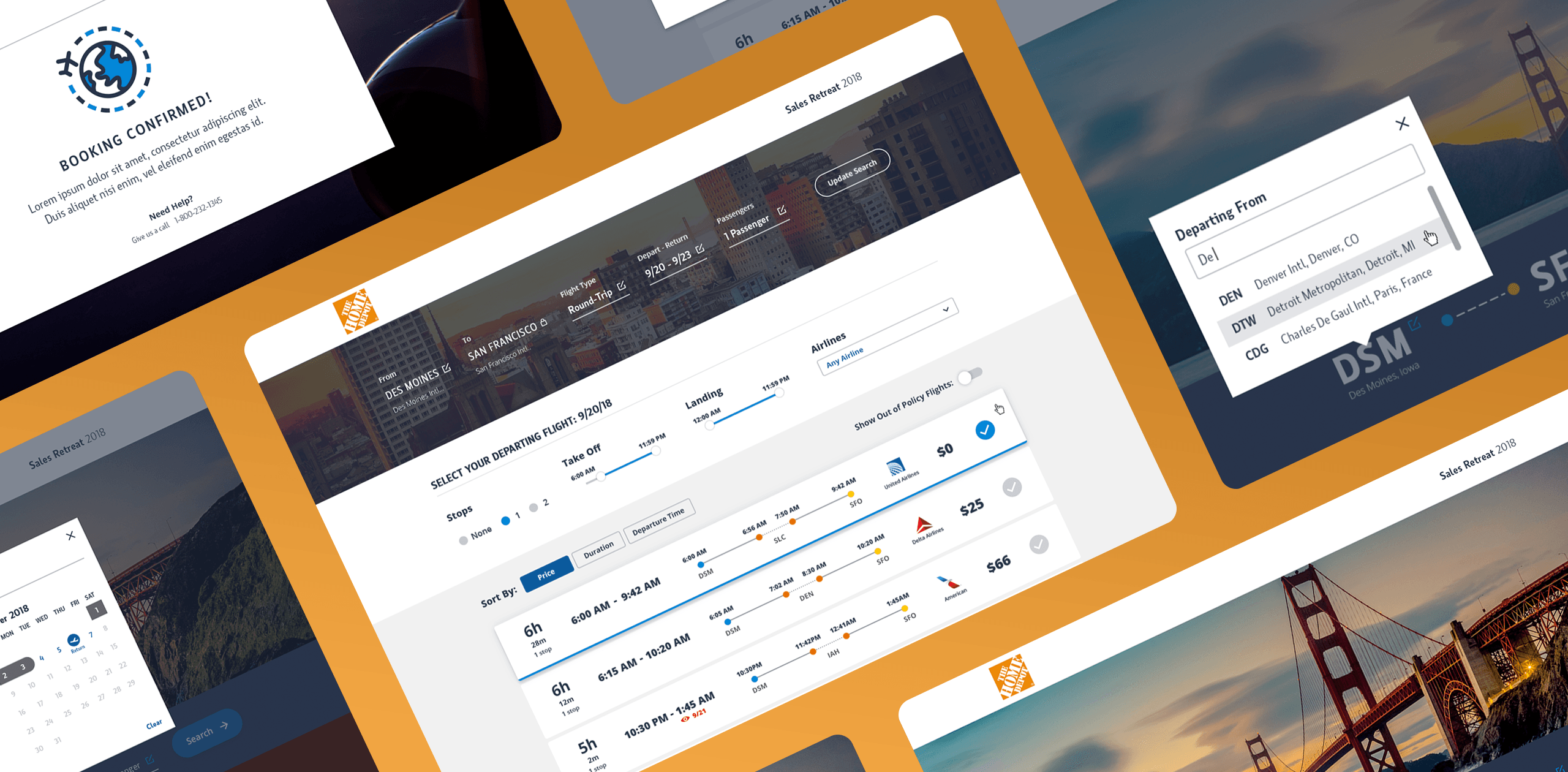
ITA Group provides engagement and travel solutions for large organisations, but its client base was demanding more and more personalisation, which individual agents needed help to handle.
Together, ITA Group and DEPT®/Digital Products created The Online Booking Tool (OBT): A custom web app that books air travel for thousands of employees at once–for different events, companies, and locations.
Increasingly complex travel requirements
A company conference in Las Vegas or Cancun sounds like a great idea until hundreds of people start buying their flights and hotels, arrive late or on the wrong days, and decide they want to bring family members. What sounds like a fabulous experience can become a corporate travel nightmare.
Enter ITA Group, the corporate travel specialists.
When it comes to corporate conferences, they make sure everything runs smoothly. From event registration to flights, cars, hotels, and outing events, all the way down to the smallest detail, ITA Group facilitates seamless travel experiences.
However, when the ITA Group was formed 20 years ago, corporate travel typically meant booking the same airfare and hotel rooms for 200 to 1000 attendees. Everyone flew into one location, stayed the same number of nights, and flew out again.
But as corporate groups grew in size and requests required escalating levels of personalisation, booking these large-scale events created a lot of time-consuming back-and-forth between ITA’s agents and a client’s employees.
Requests became increasingly more customised, companies would only pay a certain dollar amount per person, an executive wanted to take their family, or someone needed to leave a day early.
This level of personalisation meant that ITA Group’s original business model, where a live person handled everything, couldn’t scale.
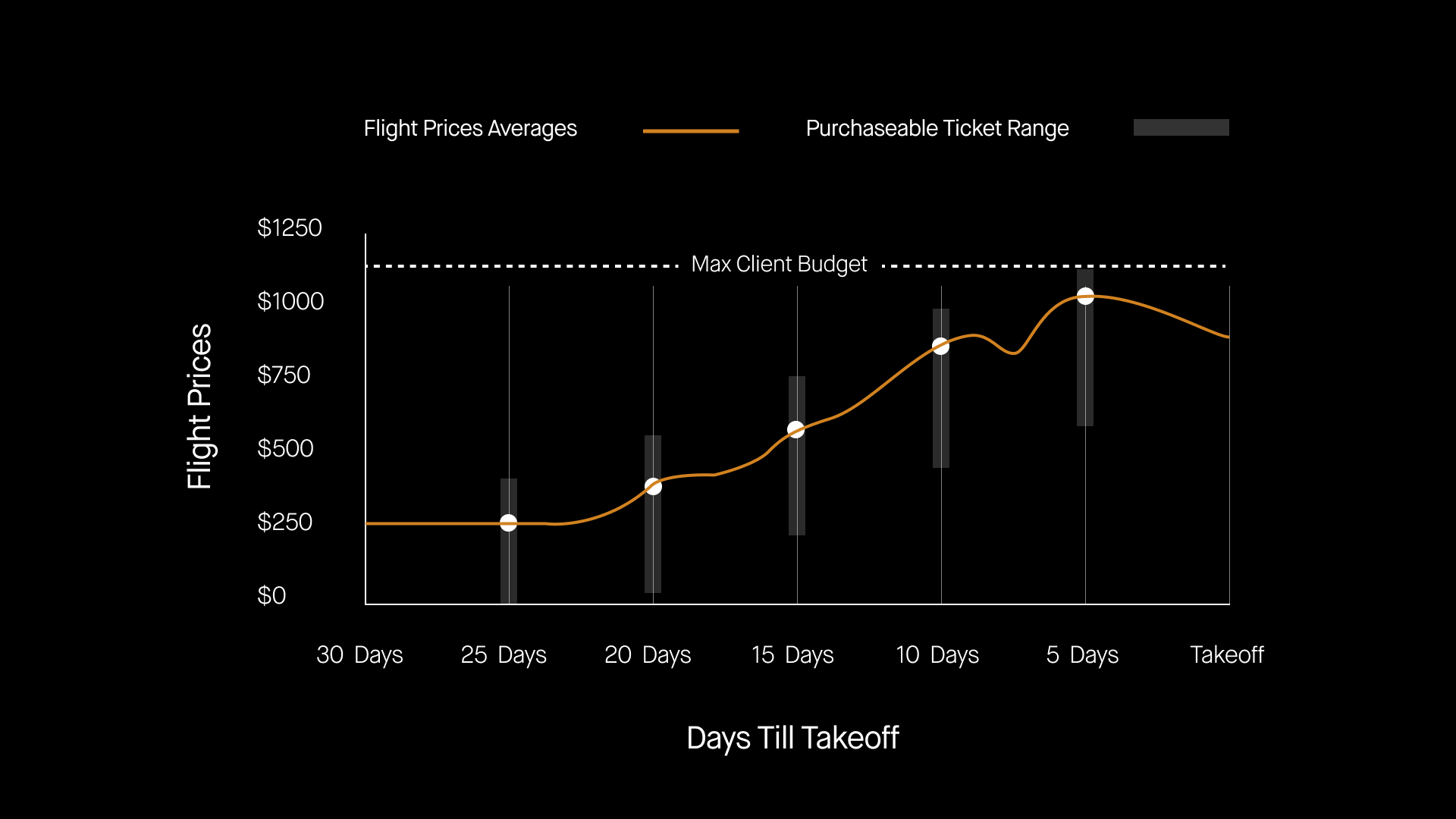
An app to help ITA Group scale
ITA didn’t have the resources to build an automated system on time, so they needed an acceleration partner who could fit quickly and easily into their lean development approach.
We stepped in as that strategic partner and led the development of ITA’s MVP.
The timing from prototype to final product was a mere six months, allowing ITA to sell to a major tech client early on and bring them along for the ride. This made the corporate client feel heard and invested in the product’s success. All in all, we delivered a comprehensive solution in the specified time period within budget.
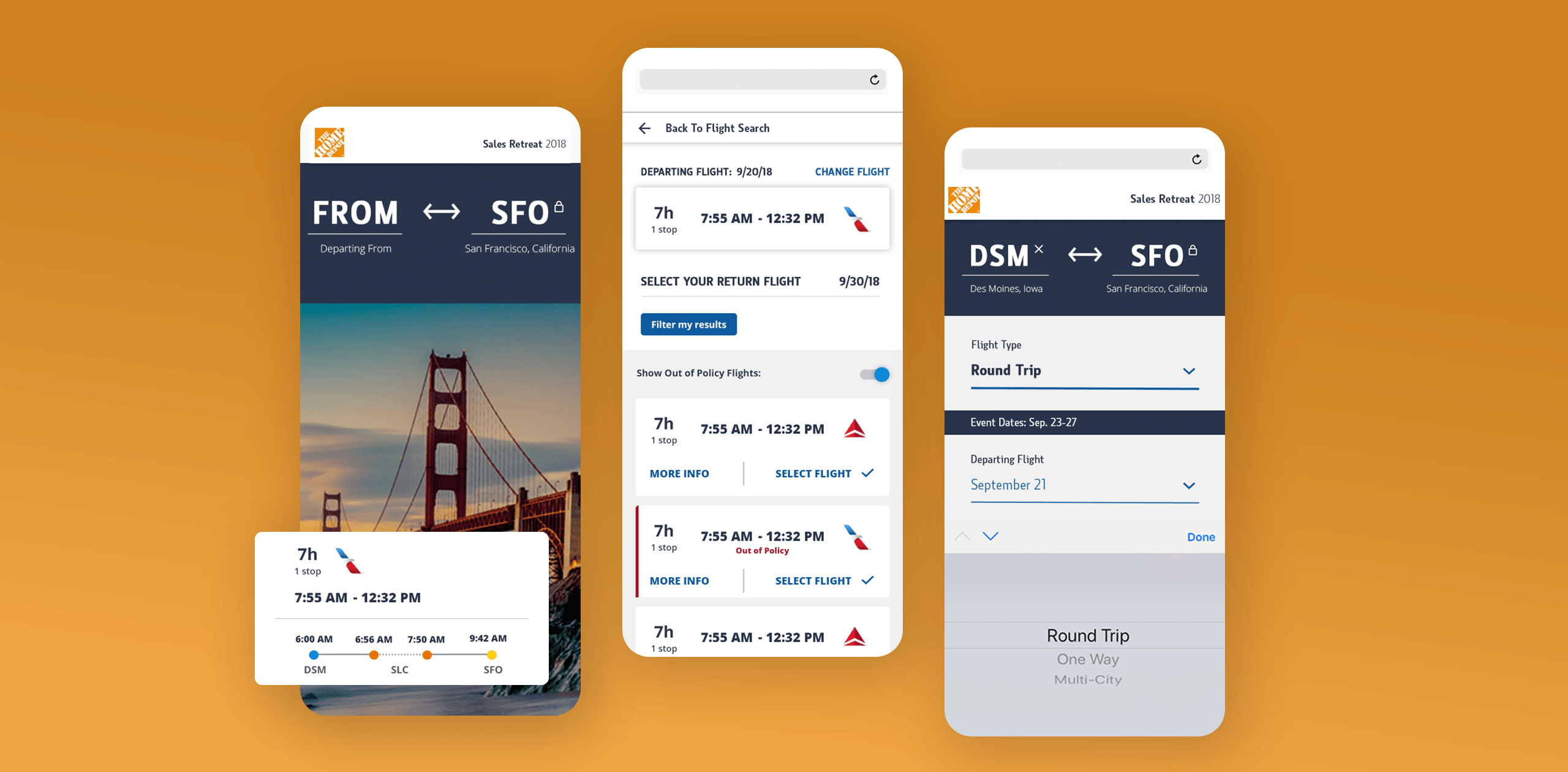
The Online Booking Tool
Together, we created The Online Booking Tool (OBT): A custom online system that allows air travel to be booked for thousands of employees simultaneously.
Designed as a lightweight web application, the OBT can take input from any given user, find the event they’re registered for, and render a dynamic, white-labeled travel experience tailored not only to their company and event but even their participant type (think employee of the month vs VIP vs C-Suite executive). Based on their participant type, the user can search within the original parameters set by the company.
While the tool only handled air travel at launch, it was built with scalability in mind and will eventually be used for booking hotels and cars.
The team was easy to work with and dedicated to finding the best solution, even if that meant challenging what we were thinking to ensure the product was the best it could be for the end user. I found this to be one of the greatest values of working with the DEPT® team.
Drew Langhart, Product Owner at ITA
Questions?
Managing Partner / Growth
Alex Glaser
Social commerce trends: How to stay ahead in the ever-changing digital landscape

#TikTokMadeMeBuyIt is the perfect summation of where the e-commerce industry is today. TikTok, Instagram, Pinterest, Facebook, YouTube, WhatsApp – without these platforms, countless brands would be unable to reach potential customers. Full stop.
Brands have spent the past decade creating relationships with customers via social media. In this way, e-commerce brands have gone beyond the act of selling. They’re creating communities, forging bonds, and building trust.
So, if the past few years have been about creating communities and building trust, what’s next?
We believe people increasingly crave immersive experiences, a sense of belonging, and genuine connections. And brands have the opportunity to create these experiences by honing their social commerce strategy.

What’s next for e-commerce?
One of the major pressure points for brands is the fluid sphere of social media. Because being on top of the social media game means being in tune with your audience–and being in tune with your audience is the only way to grow sustainably.
e-commerce market by the numbers
- $8.1 Tn: Projected size of the global e-commerce market in 2026
- 6.5%: Growth in global e-commerce sales between 2021 and 2022
- 70%: Percentage of consumers that prefer omnichannel shopping
A stunning 77% of consumers say that social media serves as inspiration for brands and products they haven’t considered before. In other words, social has become the new starting point for online shopping.
This shift calls for a strategic re-evaluation regarding the role of social media in your marketing. You need to find the right balance between brand building and performance.
To re-evaluate your brand’s relationship with social media, you must understand the social commerce trends shaping your world. We believe the most noteworthy trends to consider are:
- Cultural relevance is now achieved through user-generated content
- Social media is your new storefront
- The gap between your social media persona and your website is closing
Let’s dive in and see how these growing trends affect your brand’s perception and revenue.
Trend 01 – Cultural relevance is now achieved through user-generated content
Today, brands face a dual challenge: growing content demands and the simultaneous issue of ad blindness. To address this, you have to strike a balance between quantity, quality, and relevance.
Enter influencer programs. They enable you to commission both controlled and uncontrolled user-generated content (UGC) with established influencers and everyday people. However, scalability and brand alignment are critical factors to keep in mind.
$480Bn
Creator economy market size over the next five years
3.5X
Influencer marketing growth compared to social ad spending
71%
Consumers trust influencer recommendations
UGC and ad blindness by the numbers
Today, 79% of consumers let UGC influence their buying decisions, while ads featuring UGC enjoy a fourfold increase in CTR. In 2019, the U.S. wasted a staggering $51.6 billion due to banner blindness, emphasizing the need for more effective advertising. Shifting to influencer marketing brings a 40% boost in ROI compared to traditional banner ads.

Collaboration with creators and influencers is a must
“The growth in social is coming from the Explore feed and the “For your page” (FYP), an endless stream of brilliant, highly personalised, and 100% native content.
It means if you’re not native – you’re sticking out like a sore thumb. This, in turn, means that there’s a pressing need for a continuous stream of fresh and engaging content.
This is where UGC comes in. Building a diverse set of production methods to deliver native content is key if you are seeking to meet the growing demand for content and be present where your audience is spending their time.
You should find influencers who are strategically aligned and perform strongly in accordance to your business priorities and work with talented content creators who might not have a large following but do get social and can deliver the necessary content.”
Ali McClintock, Managing Director, Marketing Technology at DEPT®
Where to invest?
People place their trust in people, not in marketers. Therefore, UGC plays a crucial role in building consumer confidence.
However, as brands want and need UGC, they also aim to maintain creative control.
Uncontrolled UGC, generated spontaneously by consumers, offers scalability but relinquishes full creative control to the users. This form of UGC can be encouraged through commissions or giveaway contests, like on Amazon Storefront and LTK (LikeToKnowIt).
Controlled UGC is produced by content creators who receive a fixed fee or product in exchange. They create content for brand-owned channels. Although it provides content control, it is less scalable due to the time required to find, engage, and brief these creators.
Often, the most impactful and relevant approach involves a combination of influencer marketing, controlled UGC, and uncontrolled UGC. This synergy maximises your reach and resonance using human, trustworthy faces, ensuring a lasting impact in the ever-evolving social media landscape.
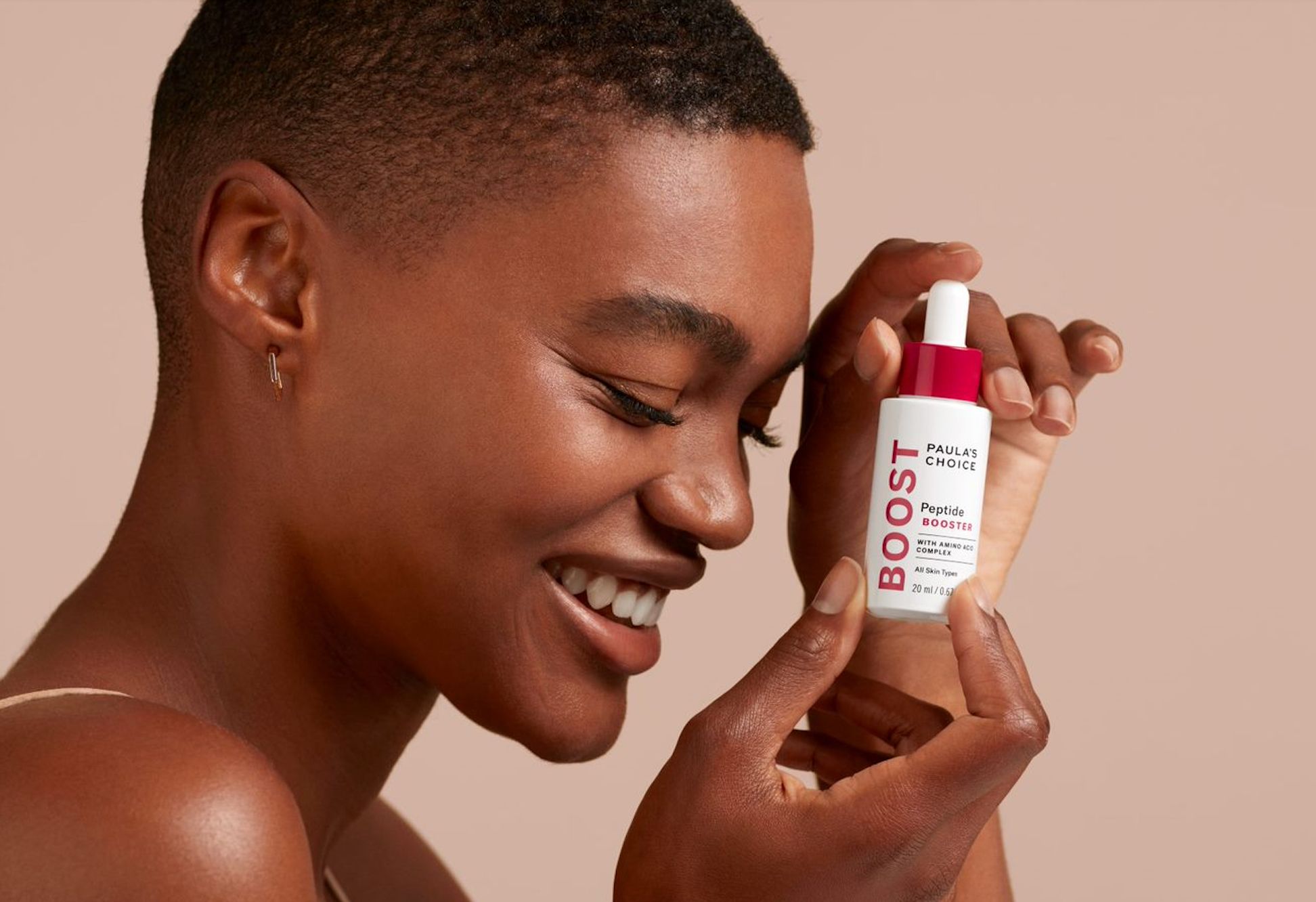
Unlocking new customers and revenue streams
DEPT® teamed up with Paula’s Choice to launch an affiliate program. This resulted in a 116% increase in monthly turnover, and 83% were new customers through affiliate links.
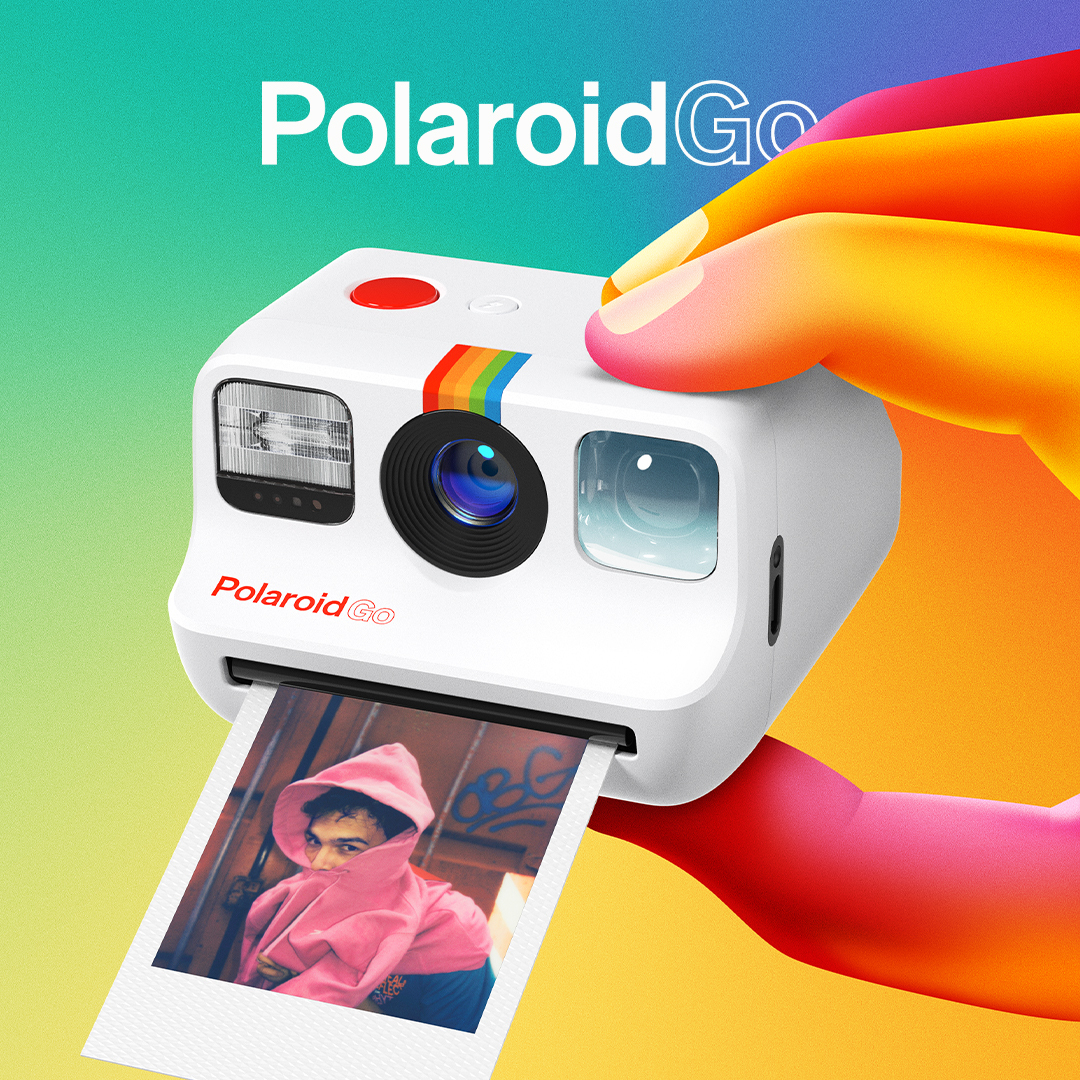
Capturing creativity with a TikTok campaign
We also worked with Polaroid to bring their product in front of Gen Z eyes. This campaign reached over 9.4M users with a view-through rate of 53%.
Trend 02 – Social media is your new storefront
Social media has become the go-to source for shopping inspiration and a way to window shop before purchasing.
Pinterest and YouTube are among the most active in this realm, but TikTok is best-suited for commerce. It is the home platform for #tiktokmademybuyit and the place Gen-Z actively uses for new product searches.
To help its clients fully utilise the TikTok Shop, a personalised and fully integrated commerce solution, TikTok has recently partnered with DEPT®.
58%
Use TikTok as a source of shopping inspiration
78%
TikTok users who have purchased a product
after seeing it in TikTok creator content
40%
Gen Z uses TikTok & Instagram search instead of Google
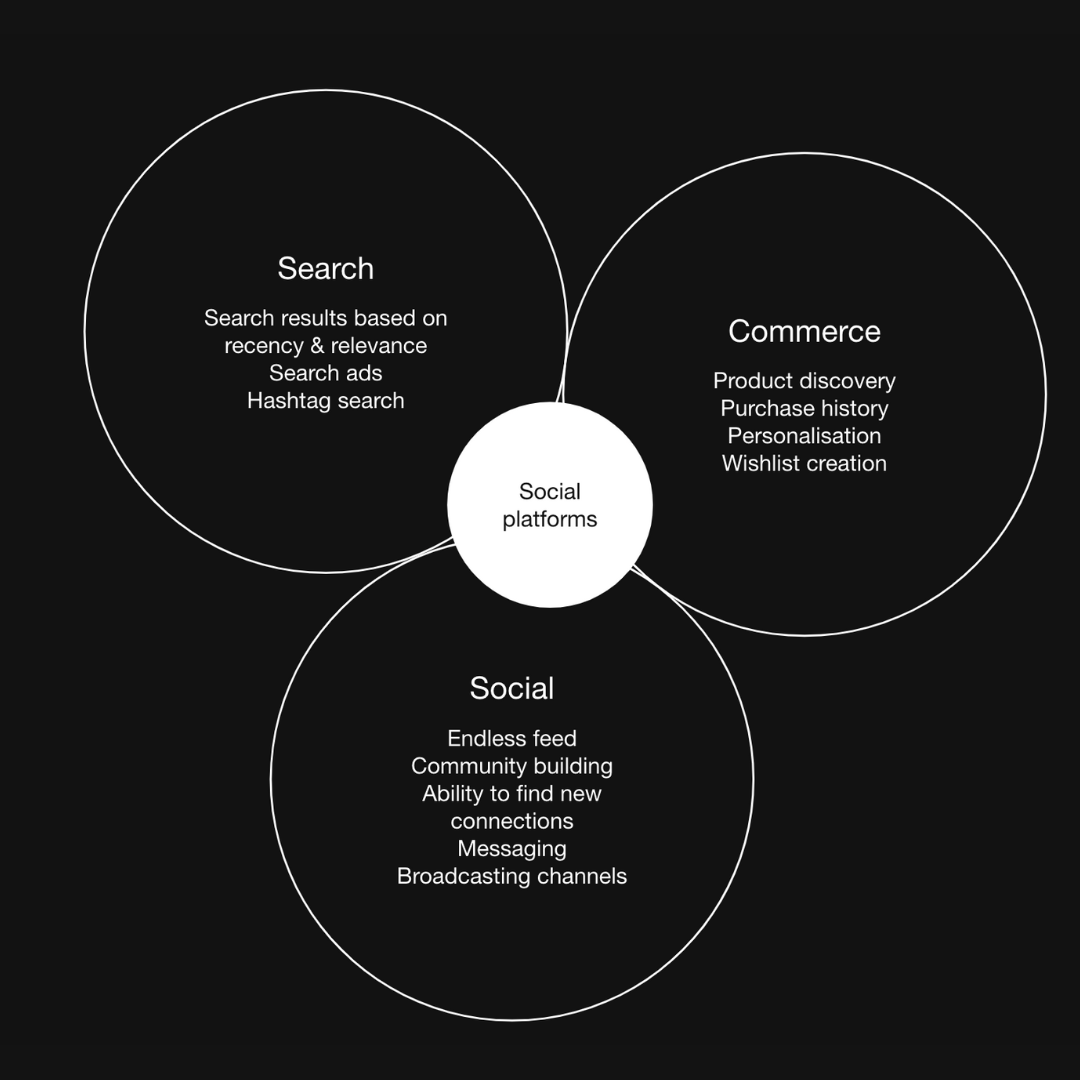
How are social media platforms turning commerce into social commerce?
In 2022, 65% of people were shopping online just for fun — they shop or browse online when they’re not looking for anything in particular.
Today, online (and especially social media) is where most people begin their commerce journey.
How can these features help solve your problems?
TLDR: By making the product shoppable and discoverable on the spot.
80% of global shopping carts are abandoned each month. To address this, social media shopping features like Instagram shopping tags and TikTok Shop are crucial. They make the path to purchase seamless, so there is less chance of drop-off once people decide to buy. If users go to a site, they may drop off due to having to log in or find a credit card, but this is avoided through in-app purchasing.
In 2019, there were already 130 million monthly interactions with Instagram shopping tags, so it is important to leverage social commerce tools to meet consumer demand.
Social search is gaining more traction, with people seeking inspiration in broad categories rather than specific brands; for example, 97% of Pinterest searches are unbranded.
The power lies in placing your products in front of consumers actively seeking what is offered, even if they’re not explicitly searching for your brand.

TikTok, the trifecta
“What TikTok really excels at is the combination of creator activity, UGC, and social commerce. The platform creates an ecosystem where creators feature products, real users share video reviews, and anyone can easily make purchases.
“With a seamless checkout process and strict merchant delivery standards, TikTok effectively generates demand, fulfills product supply, and increases user reviews, driving more sales.
So you have a valuable opportunity to list products on TikTok Shop, potentially turning a bestseller into a TikTok sensation.”
Nikki Melless, Media Director
TikTok shops complete in-app experience
TikTok has three main elements that enable in-app purchases:
- Live shopping lets you shop directly from a LIVE by tapping the pinned products or browsing the shopping basket icon.
- Shoppable videos allow you to shop directly from a shoppable in-feed video by tapping the product link & basket icon.
- In the product showcase, you can shop directly from a brand or creator account and get access to products within the app.

Barbie’s TikTok boost
DEPT® partnered with Bol.com to promote their new range of dolls by using a creative TikTok campaign featuring Barbie in anticipation of the upcoming movie. This campaign increased their TikTok followers from 146.5K to 285K and gained over 4.1K followers per new video.
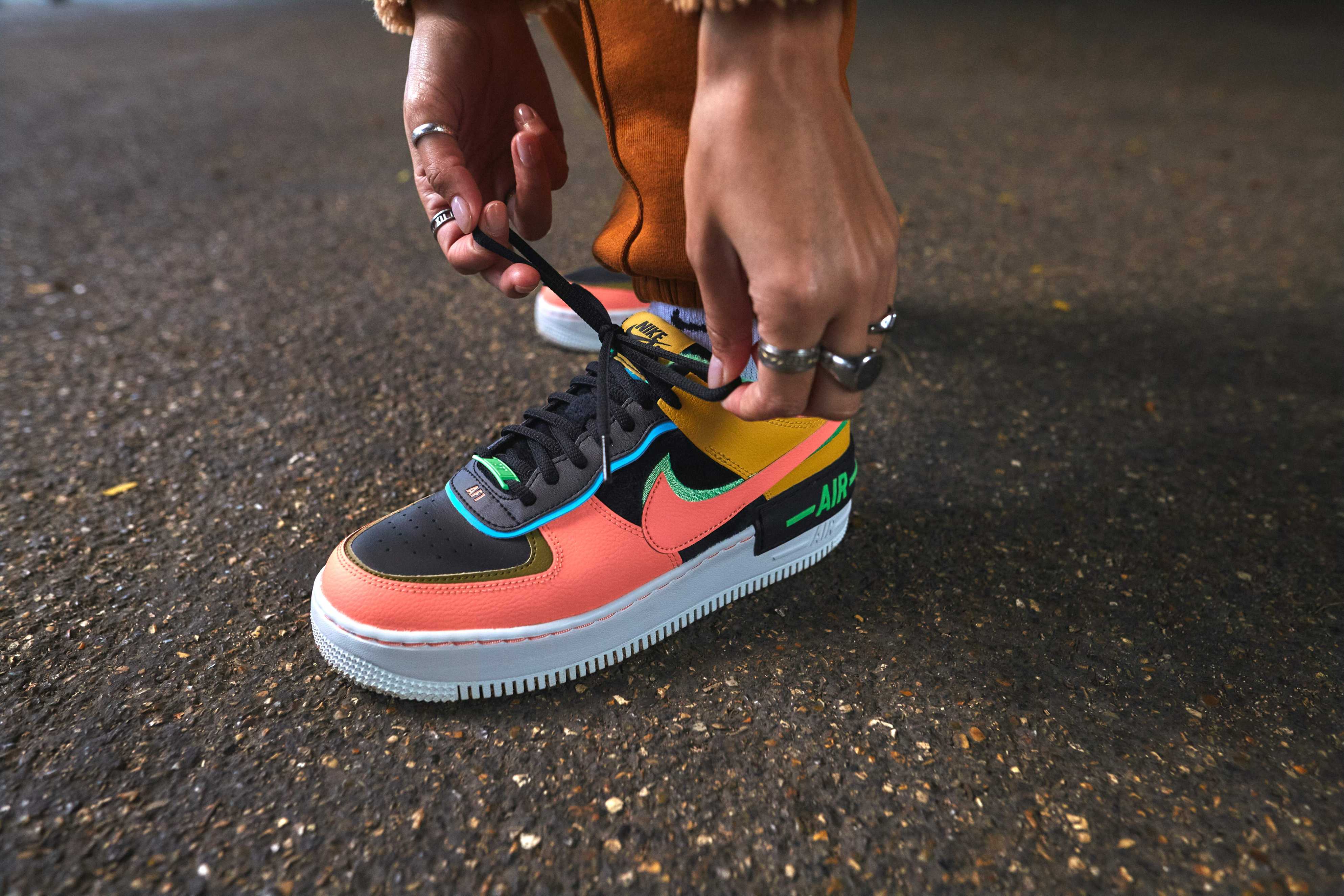
Taking a retail giant into the world of TikTok
DEPT® crafted a TikTok campaign for ASOS to help them reach new markets by featuring creative video content and collaborating with popular TikTok creators. As a result, this campaign got over 1.2 billion video views and a 50% increase in ad recall.
Trend 03 – The gap between your social media persona and your website is closing
Today, the gap between your digital experience and your social media experience is growing. This is not surprising given that social networks offer a unique set of interactive features, some of which are not native to e-commerce platforms.
Therefore, you may face the challenge of aligning your website experience with your social media. And it isn’t solely about appearances; it’s about creating a cohesive and immersive brand presence.
So to build a more engaging online presence that speaks to your personality, it is crucial to maintain consistency across different platforms and embrace the integration of social content.
58%
People who visit a brand’s
social pages before its website
75%
Internet users use social
media to research products
9.5%
Yearly increase in annual revenue for
brands with top customer engagement
What to focus on in the future
Everything looks the same. The same mandates shape experiences and technology is being used to paint the same picture repeatedly.
Every moment in the customer journey is designed to incrementally nudge customers to the next step with tailored content.
CMOs are on the hook for driving revenue; their tenures are getting shorter. They don’t have time to build brands that people genuinely want to engage with. And increasingly, their role is to move pixels around in search of short-term e-commerce revenue growth.
Throw into this mix the introduction of AI-driven personalisation – now, every brand wants to personalise every interaction. But there’s a risk of losing creativity, shared ideas, and serendipity.
The question is: Do customers want to be part of brands, or do we want brands to be part of us? Do I want to be part of Gucci, or do I want Gucci to be about me? There’s no one-size-fits-all answer, but it’s worth thinking about.

In the homogenous e-commerce landscape, we hope that you will focus on
- “Being different, because when everything looks the same, being different is your differentiator.
- “Telling your story, because as e-commerce becomes increasingly shoppable, it evolves from being the last step in the transaction journey to a canvas for storytelling and emotional connection.
- “Caring about your craft, because the customer does. They don’t care about the brand book or the marketing strategy; they react to the final product in front of them.”
Asher Wren, Vice President of Growth at DEPT®

Some brands are already merging the two worlds
Creator partnerships are a key component of your social media accounts. However, today, it’s not enough to keep them exclusive to social media. You have to integrate creator content into your website, too.
- Amazon Storefront: This is essentially a mini-website on Amazon for creators. Influencers can share their favorite products and connect their followers to Amazon commerce.
- Stronger: Makes use of editorial-focused influencer content and connects influencer stories to collections and products.
- NA-KD: Has influencer collections dedicated to specific influencers. They’re used as the models showing the products.

Bringing traditional store experiences to e-commerce
DEPT® helped Shoe Carnival accelerate its omnichannel journey by digitizing store experiences, personalizing marketing, automating customer service, and expanding buy online, pick up in-store (BOPIS). This resulted in 174% greater digital revenue.

An e-commerce experience driven by a brand mission
DEPT® helped Patagonia create a digital shopping experience that balances culture, business, and environment and serves as a hub for activism and content. This increased the brand’s mobile revenue by 25%.
How to elevate your social commerce experience
Integrate brand and legacy content across your site to add surprise and delight
- Don’t rely on separate ‘about the brand’ pages.
- Allow users to explore the collections, campaigns, and stories from your founding moments to last season’s couture.
- Create a unique moment of delight that matches your spirit.
Fuel the passion for (window) shopping by helping users discover
- Create endless entrances and new features for shop discovery.
- Consider incorporating offline opportunities, the customer portal and/or a mood board feature as starting points for the buying journey.
- Add advanced browsing utilities to enable shoppers to define their own experience.
Connect to social and build an experience on top of it
- Craft your UI with the latest social UX patterns in mind. Think Pinterest-style discovery for products or Instagram stories’ flair for “product stories.”
- Make a seamless connection to shopping from your social platforms, otherwise, your social users are simply content consumers.
- Integrate shopping at every point in the experience.
Want to leverage these social commerce trends? We specialize in e-commerce tech and marketing and can help your brand stay ahead.
More insights
Questions?
Digital Trends & Research Analyst
Karla Nurdilda
Marketers are experiencing creative collapse, with the foundation under pressure from two angles.
On the one hand, efficiency is a requirement. You have increasingly shortened go-to-market timelines with personalisation expectations and tight budgets.
On the other hand, the quality of the creative determines whether your campaign is successful–no matter what industry or type of campaign.
These challenges may seem unsolvable, but technology is coming to the rescue. Deemed the “hope of performance marketing,” creative automation optimises workflows, eliminates human errors, and delivers at scale.
While it might seem like this tech-driven approach to creative can only help with tight timelines and tighter budgets, we’d like to set the record straight: It’s not just about efficiency. Creative automation improves innovation, personalisation, and value-driven campaigns.
Creative automation is a two-component approach
Automation refers to enabling creativity with technology. You meet your user’s practical needs at the click of a button. Static assets in 10 sizes for all platforms? Check. Automatic translation for six different markets? Yes. The same asset but with ten copy variations? You got it.
Tedious tasks are done faster and with less fatigue within your design department. All it takes is quality-checking the automated assets after the fact.
Because of these advantages, creative automation often sells on efficiency. The quantifiable promise of an improved ROI hits hard in creative collapse. Yet, as marketers directors claim creativity feels restrained, the pressure on creative quality is growing. For a way forward, don’t put yourself in the efficiency box. Instead, imagine a new angle.
What if creative automation came from a brand-driven ambition?
Tell your brand’s story with creative automation
All creative automation works on simple ‘if X, then Y.’ The X and Y variables can be location, weather conditions, brand colors, or unique selling points (to name a few). And what a cheat code to the marketing formula (the right message to the right audience at the right time)!
Imagine ridesharing ads in party areas at 2 AM, social ads with healthy breakfast options distributed to those who shared their morning running update, and What’s App chatbots helping passengers retrieve their flight tickets five minutes away from security.
In all these circumstances, creative automation helps your brand tell a piece of its story, whether it’s reliable, an energiser, or a service champion. When you start seeing creative automation not as a resource saver but as an impactful way of thinking, efficiency, and creativity go hand in hand.
Then, you can ask yourself what variables help craft the desired perception of your brand.
Based on those answers, you can brief your creative team so the outcome is not blatant templating with sales messages but a concept that displays creative quality and innovation. For example, Zoopla, the British property website, boosted their perceptions around expertise. 20% more of their audience believed them to have the strongest property knowledge post-campaign.
Just Eat Takeaway, the global food delivery hero, showed that they know what their customers want by producing assets that had many occasions for ordering food built into them.
Choose your variables wisely
The key to using creative automation to drive creative quality lies in choosing variables wisely.
You risk repetition over creative quality if they are geared solely towards saving money and time. Because the simple truth is that every brand has a story to tell. And every campaign has a central message. Picking up on the variables that tell that story in a context relevant to your target audience has a huge impact.
Ultimately, you can achieve creative quality with creative automation if it’s part of your brand’s storytelling.
More on creative automation
Questions?
Account Director
Annika Timmer
In the fast-paced world of marketing, consumer expectations are rising. More than ever, they want personalised experiences and offers.
DEPT®/Lifecycle Marketing is an expert team dedicated to creating exceptional experiences at scale, powered by alliances with best-in-class technical partners and proprietary technology.
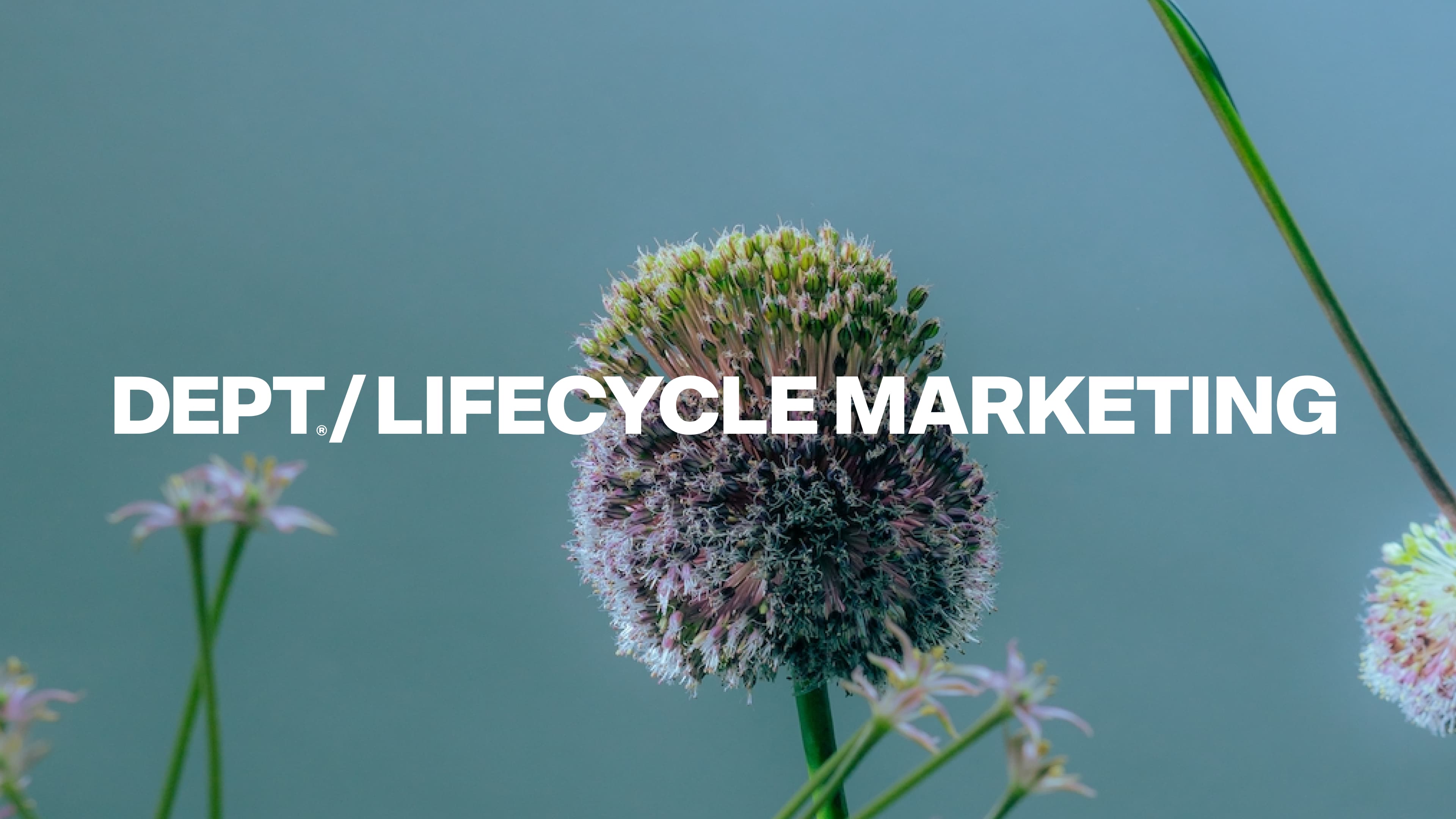
Creating experiences at scale
Retaining existing customers is crucial for growth, and far more cost-effective than acquiring new customers. But it can be challenging to manage multiple channels and touchpoints to keep customers engaged and loyal in a privacy-by-default world.
Brands that meet consumer expectations with personalised customer experiences can expect increased revenue and continued brand loyalty.
Based on our 20+ years of experience working with global companies, we encourage brands to take an ‘always on’ approach to marketing automation, helping them build relationships through a series of integrated communications across multiple channels.
Marketing automation is all about extending customer lifetime value through relevant, timely, and personalised communications across numerous channels. Each communication is a component part of a larger vision that builds and contributes to the broader strategic goals of your business and helps to build relationships with your customers at every stage in their journey.
But in today’s digital reality, it’s incredibly difficult to deliver effective, multi-channel retention and loyalty programs like this. That’s where it can be helpful to work with a specialised marketing automation agency like DEPT®.
Our expertise
Our marketing automation team is here to help you to establish profitable, personal, and long-lasting relationships with your customers, both now and in the future.
Our services
Lifecycle Strategy
Elevate your marketing automation strategy with a well-crafted game plan that includes lead generation, customer journey mapping, creative and content strategy, measurement, market insights, and loyalty concepts.

(Email) Campaign Management
We help turn ideas into impactful campaigns through campaign development, journey creation, segmentation, and day-to-day operations programs. We then use reporting and optimisation to continuously adapt and evolve.

Tech & Data
To personalise at scale, you’ve got to know your customer. And to amplify your impact, you’ve got to innovate with top-tier tech. DEPT® specialises in tech and data, allowing you to integrate, analyse, and implement the latest solutions.

Creative Content
Compelling content lives at the heart of the customer journey. With DEPT® creative content, we strategise around your user’s journey, test, iterate, and automate. We believe in blending creativity with content at scale.
Our clients




















We work with some of the world’s biggest brands to strategise and deliver marketing automation wins.
Approach to lifecycle marketing
We take a three-pronged approach to lifecycle marketing, that unites your unique customer, technology, and data.
01 Understand your customer
It all starts with your customers–understanding their needs, wants, pain points, and purchase patterns. With evolving business intelligence, we paint a clear picture of your customers, working with data and AI to understand the nuance between seemingly similar segments.
02 Automation
Efficiency is table stakes. We approach automation via Creative Automation, which improves innovation, personalisation, and value-driven campaigns, but at scale. Creative automation helps your brand tell a piece of its story and reach audiences when it is most impactful.
03 The right foundation
The foundation of hyper-personalisation lies in the right martech, data collection, AI, and analysis. We partner with all of the leading marketing automation platforms, have a dedicated data practice, and are paving the way for brands to leverage AI.
Our partners









Insights
View all insightsDrop us a line
Drop us a line to discuss how we can work together to achieve your goals around lifecycle marketing and CRM.
It’s no accident that certain products catch your eye when you walk into a store.
Visual merchandisers meticulously plan the organisation and promotion of products in-store to create an engaging and effective shopping experience. It’s an art, science, and skill that can make or break the success of brick-and-mortar stores. And when it comes to e-commerce, digital merchandising is just as, if not more, critical to get right.
E-commerce marketers and merchandisers deal with vast product catalogs and wide audiences. Determining which products to showcase out of thousands (or even millions), on the world’s leading marketplaces such as eBay, is a challenge that can determine the success of online retailers. Doing so effectively requires a deep understanding of marketing and sales data, as well as shopper behaviour and needs.
Digital merchandisers must navigate a complex landscape of seasonal shifts, client preferences, product quality, and ever-changing consumer trends, to ensure the right products are surfaced at the right time to the right shoppers.
Sitting in a unique position between marketing and sales, merchandisers need to collaborate with these teams to determine and track the right KPIs — beyond surface-level metrics — to inform impactful decisions on curating their e-commerce site. At DEPT®, we think of this as mindful merchandising.
Beyond the obvious
Mindful merchandising is the art of guiding online shoppers through an e-commerce site and providing a natural experience for discovering new, relevant, or unexpected products, all while ensuring no shopper slips between the cracks.
Any e-retailer can throw their newest or most popular products up on their shop’s homepage and hope customers will be enticed. But to truly deliver a captivating and logical consumer journey, merchandisers must look deeper than the obvious sales metrics or seasonal trends. By taking a holistic, data-driven approach, digital merchandisers can act as an extension of their creative and marketing teams to:
- Identify the most popular searches, inventory, and categories
- Promote products that are high in demand
- Create targeted marketing campaigns for owned channels
- Track and analyse performance and engagement metrics
- Develop and action strategies
At DEPT®, our merchandising experts have decades of experience crafting and executing digital campaigns — and we’re sharing the top data sources our team uses to drive strategies for our e-commerce clients.
Site navigation and user engagement metrics
The customer journey begins before visitors even land on your site, making tracking entry and drop-off points crucial. Analysing the path customers take — from search engine, to landing page, to inventory page, to checkout — provides valuable insights into user behaviour and helps identify areas for improvement.
Metrics including click-through rates, bounce rates, exit rates, clicks on page, views, heat mapping of module interactions, and sales data influenced by specific pages offer a comprehensive view of user engagement. These provide essential feedback on the performance of your content and product placements, enabling you to fine-tune your strategies for higher conversion rates.
User engagement A/B testing
It’s essential for merchandising teams to work in collaboration with creative and marketing to continually test and optimise product ads and promotions across all channels. Through A/B testing emails and onsite banners, you can experiment with various creative elements — visuals, copy, and more — to understand what truly resonates most with audiences and create a unified, engaging customer experience at all touchpoints.
In reality, many brands overlook this aspect. Amidst the whirlwind of day-to-day operations, the significance of continuous A/B testing often takes a back seat. But the digital realm offers an incredible ability to test and learn, so even when deadlines loom large, brands can’t afford to miss out on these valuable opportunities. Every test provides you with insights and learnings that can be leveraged for future campaigns.
Targeted customer personas and demographics
In today’s retail landscape, achieving personalisation is a top priority. Customers seek a genuine connection with brands, wanting to feel understood and valued. Personalisation, at its core, involves leveraging customer insights to tailor interactions and craft unique experiences. However, major e-commerce giants such as Amazon, Woolworths, and emerging players like Temu face the challenge of catering to massive audiences. The question then arises: How can personalisation be achieved at scale?
Meticulous audience segmentation is crucial for personalised experiences, especially for retailers with extensive customer bases. Understanding how to construct segments based on customer behavior and aligning them with business objectives is paramount. This directly impacts targeted messaging, offers, and your brand’s presentation to these distinct audiences, forming the cornerstone of effective personalisation at scale.
Merchandising plays a vital role in this approach. Once audience segments are defined, merchandisers can curate offerings and experiences that resonate with each segment — strategically placing the right products, promotions, and messages to engage and guide customers seamlessly through their unique journeys.
Top searches on-site
Similar to tracking organic keyword data, mindful merchandisers should regularly track and review top searches at both a category and brand level within the e-commerce platform. This lets you curate experiences featuring in-demand inventory within a category, highlighting the brands users search for most frequently.
Reviewing seasonality scores of searches across categories, an index indicating a category’s level of seasonal popularity, allows you to determine which categories are most seasonally relevant at a given time. This historical data makes it possible for you to forecast category spikes and plan timely experiences that align with expected user behavior.
Inventory levels
Both historical and real-time inventory levels are essential for campaign planning and ensuring you can push relevant products with deep inventory for promotions — especially during peak shopping periods like Black Friday. By analysing previous year inventory levels for trends and patterns, merchandisers can predict shopper behaviour more accurately and create content that resonates with customers.
Turning collaboration into conversion
With so many potential metrics to track, we know that the most difficult part of e-commerce marketing is determining which KPIs should drive your strategy. By working with an e-commerce agency like DEPT®, digital retail brands benefit from having data analytics expertise, an external perspective on all things e-commerce, and the power of a creative studio all on their side — the ultimate trifecta for mindful merchandising.
Questions?
Lead Merchandiser











